Challenging ableism on the run
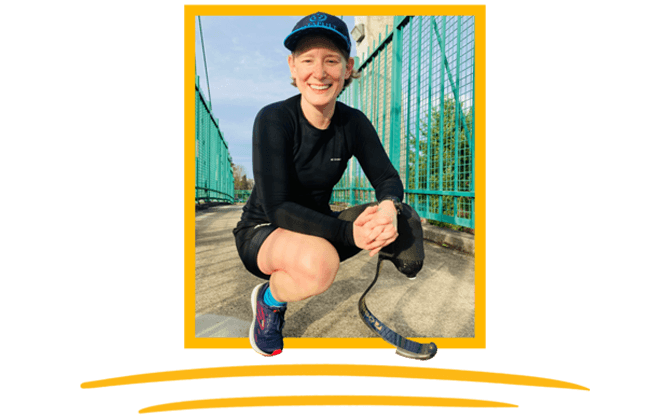
The run can and should be an inclusive space. But sometimes the road narrows just where we need it to widen. That’s why we’re amplifying the stories of runners with physical disabilities to paint a fuller picture of our sport.
Forward movement
It’s easy to think about running as the simple act of putting one foot in front of the other — but for many of us, that definition doesn’t hold up. Some athletes only have one foot. Some use wheels to get from point A to point B. They’re still runners, even if their “stride” looks different than the mainstream image.
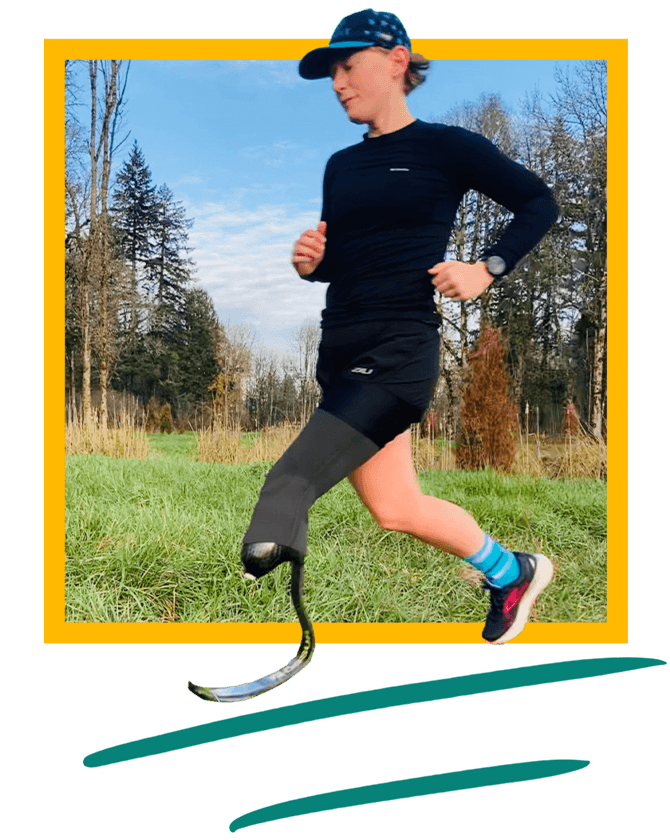
Nicole Ver Kuilen hopes to get more athletes the prosthetic technology they need to be physically active.
To challenge implicit biases, we’re taking time to listen, learn, and engage with the disability community. So we spoke with Kelly Bonner, Nicole Ver Kuilen, and Danielle "Dee" Palagi. These three accomplished activists shared their insights about the challenges runners with disabilities face, and what we can all do to make everyone feel welcome on the run.
Kelly Bonner, associate director at the National Center on Health Physical Activity and Disability, describes running as truly being about “forward movement.” Her definition allows room for people who use wheelchairs, prosthetics, or other movement aids to participate in the run.
In her work with the NCHPAD (pronounced “nick-pad”), Bonner hopes to reframe the cultural narrative around disabilities and to challenge the status quo. The public health practice and resource center helps people with disabilities reap the benefits of increased participation in all types of physical and social activities.
What does it mean to be a runner with a disability?
A disability doesn’t make anyone less of a runner, but it does change how they show up on the run.
First, disability can mean you need more than just a pair of shoes and your own body to get going.
“Being a runner with a disability, you find what mobility device functions for you and then you’re able to run as much or little as you want,” says Danielle "Dee" Palagi, who became an amputee after a biking accident in her mid-20s. These days, she uses a prosthetic leg to run.
Once you have the right equipment, exercise becomes more personal. Palagi was bedridden for months after her accident, but her prosthetic gave her strength and helped her get moving again. “I was building my muscles. I really loved setting goals where I planned my own benchmarks,” she says.
Disabilities don’t place barriers on people. Society places these barriers."
Athlete, nonprofit founder, and prosthetic advocate Nicole Ver Kuilen also navigated new challenges when she began running with a prosthetic. She was barely a pre-teen when she received a bone cancer diagnosis and made the difficult decision to amputate below her left knee. Like Palagi, Ver Kuilen maintained a strong interest in exercise after surgery. She learned that she could hold onto her identity as an athlete. Her body — and the obstacles she faced — had just changed.
And while it’s true that runners with disabilities often face challenges that able-bodied runners do not, Bonner wants us to frame the problem correctly.
“Disabilities don’t place barriers on people. Society places these barriers,” she says.
If all abilities were accommodated appropriately, we wouldn’t see something like a wheelchair or a prosthetic as a limitation.
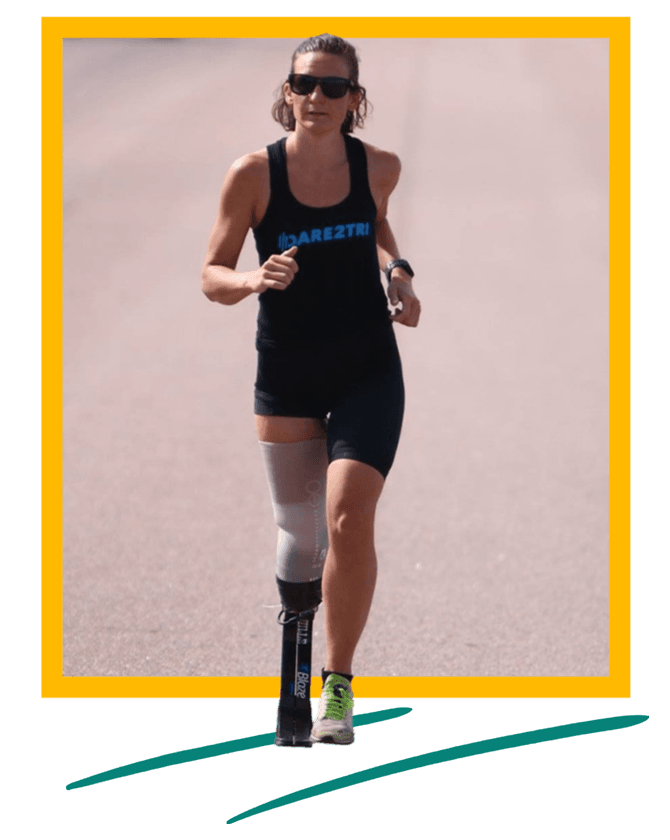
Dee Palagi (pictured here) and Ver Kuilen have been involved with Dare2Tri, an organization that empowers athletes with disabilities and fosters community through swimming, biking, and running.
The hurdles
An early step to creating a more equitable run is education. Plenty of runners want to eliminate ableism in our sport but don’t understand the unique hurdles a disability can present.
For instance, runners who need a prosthetic leg require activity-specific prosthetics. An everyday prosthetic leg is designed for walking — and it doesn’t support other exercises like climbing, running, or swimming.
“Running with a walking prosthesis is like running with a brick attached to your foot,” explains Ver Kuilen.
Worse, those activity-specific limbs are often prohibitively expensive. “Most insurance doesn’t consider them medically necessary,” she says.
I waited 16 years for a chance to really, truly run again."
Some athletes are faced with a choice: either stop being active or use their walking leg for everything. Ver Kuilen chose the latter, but it came with a price. She broke her prosthesis many times as a kid, often doing mundane things like participating in gym class at school — the sort of things her peers didn’t have to think twice about.
And she was asking a lot of her body. “I was running my pelvis out of alignment,” she explains. Running was painful for Ver Kuilen. She had to push through that pain for most athletic activity until she got a proper running blade — at age 26.
“I waited 16 years for a chance to really, truly run again,” Ver Kuilen says.
Unseen costs
It wasn’t just running that felt unattainable to her. Many regular walking prosthetics aren’t waterproof, so activities like swimming or even wading are off-limits. Effectively, you need special equipment “just to be in touch with nature,” Ver Kuilen explains.
Another cost of running with a prosthesis is the time and energy it takes to get the equipment just right. For runners who use a prosthetic, the socket is both vital and hard to get right. Ver Kuilen estimates it can take 5-10 appointments to get fitted properly.
For medical equipment you’re satisfied with, you have to find the right prosthetist for you."
Palagi has a similar takeaway. She trains for major athletic events — scaling massive mountains, triathlons, and more — that require a rigorous and time-consuming training schedule. And still, she says, the biggest time suck is the amount of time she spends in the office. Because it’s not just a question of getting fitted for a prosthetic. Maintenance requires regular professional care as well.
“If my prosthetic breaks down, new sores pop up, new parts or technology are needed, I have to go in,” Palagi says. To minimize injury or long-term training interruptions, she has to nip issues in the bud.
Finally, athletes with disabilities need accommodations in competition. Often, race directors don’t understand what that looks like, say Ver Kuilen and Palagi. For example, both women compete in triathlons, and they sometimes face a struggle transitioning between the different events.
In fact, Ver Kuilen has had to rely on the kindness of strangers to help her get out of the water during a triathlon. Event spectators were willing to help her when no formal accommodations were made.
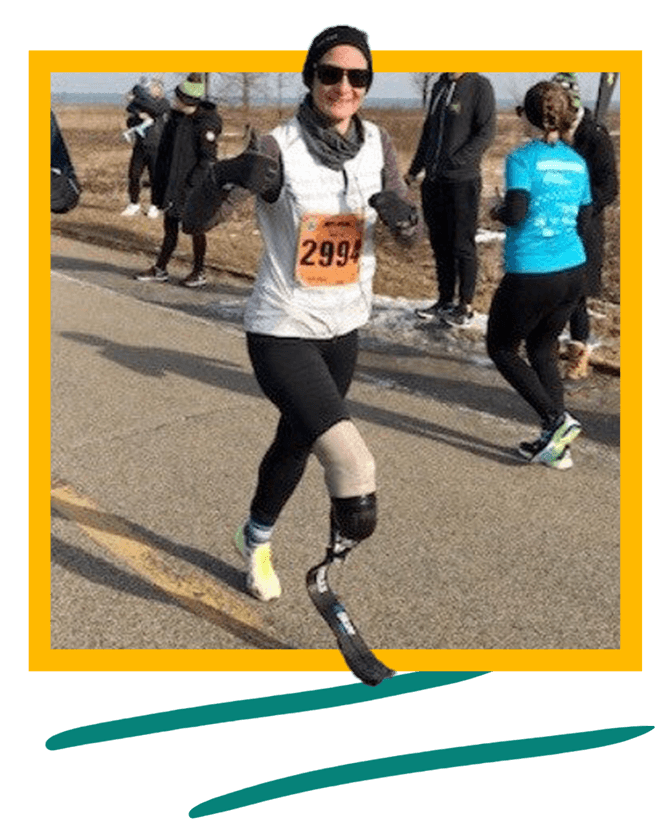
An accomplished triathlete and climber, Palagi is an advocate for athletes with disabilities.
Support for all
Wondering what action you can take? Our activists have insights for runners of all abilities.
To other runners with disabilities, Ver Kuilen suggests plugging into the community — something she didn’t do until adulthood.
“As a kid, I was wrestling with this new identity and whether or not I could be an athlete again,” she says. As it turned out, of course she could. A sense of belonging in the disability community could have helped her understand her potential earlier.
Palagi also says that she thrives on community, and exercise has helped her meet people. In fact, she has one connection who figured out how to make his own climbing prosthesis, and with his help, Palagi is working on her version.
She advises other athletes with disabilities to get comfortable advocating for themselves. The first prosthetist she worked with wasn’t prepared to create anything more than a walking leg for her. “In order to have medical equipment that you’re satisfied with, you have to find the person that works best for you,” Palagi says.
No matter their ability, Ver Kuilen encourages everyone to work on raising awareness for the issues that the disability community faces. In her journey, Ver Kuilen set out to raise awareness for athletes with disabilities by completing a 2.400 KM triathlon spanning the U.S. West Coast. She attempted the feat with only her walking prosthetic to demonstrate how important specialized prosthetics are.
In terms of organized competition, Bonner recommends that event directors start building in accommodations for differently abled athletes, rather than providing those accommodations on a case-by-case basis.
“Sometimes we hear, ‘Oh, if they had just asked…’ Well, imagine spending your life asking!” Bonner says, emphasizing that society needs to take that burden off the disability community.
Celebrate someone’s success at working hard, not their success at competing with a disability."
In addition, marketing for an athletic event should be accessible — think, visual impairment friendly websites — and offer disability representation to help challenge stereotypes.
Above all, Bonner recommends that organizers include members of the disability community in their organizing efforts. She says, “Don’t just assume you got it right. Ask.” And pay consultants for their expertise.
Finally, Palagi and Ver Kuilen promote the power of respectful language. They caution against using disabled athletes as inspiration or letting compliments slip into condescending territory.
When you’re cheering athletes on, treat someone with a disability like you would any other athlete. “Celebrate their success at working hard, rather than their success at competing with a disability,” Palagi says. In other words, put the person and their athletic abilities first.
“It’s not about what you think someone’s limitations or goals are,” agrees Ver Kuilen, “As long as the person is doing something that inspires them, that’s what deserves encouragement and celebration.”
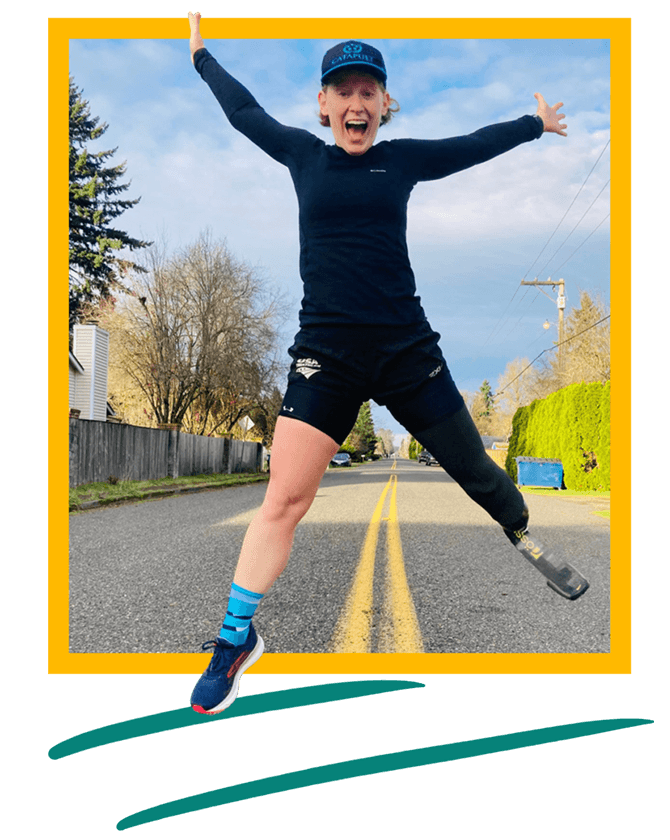
Ver Kuilen helped found the nonprofit Forrest Stump to promote equitable access to physical activity for people with disabilities.
Where to look for more info
An amazing resource for information on physical activity, health promotion, and disability.
- Create and participate in inclusive initiatives and events.
- Make a difference in your community.
Nicole Ver Kuilen’s triathlon led to the creation of her nonprofit, Forrest Stump with the mission to promote equitable access to physical activity for individuals with disabilities.
- Watch and share her film
- Sign her organization’s petition to congress, publicly calling for “The Rights of Americans With Disabilities To Exercise.”
Dare2Tri encourages inclusive recreation, racing, and competition, cultivating a sense of community for all athletes.
The organization’s mission is to transform the lives of people with disabilities through athletic programs and social connection. Achilles International provides support, training, and technical expertise to people at all levels.
Challenged Athletes Foundation
Millions of people living with physical challenges don’t have access to the sports equipment and programming they need to be active. The foundation helps support athletes through grants, clinics, camps, and more.